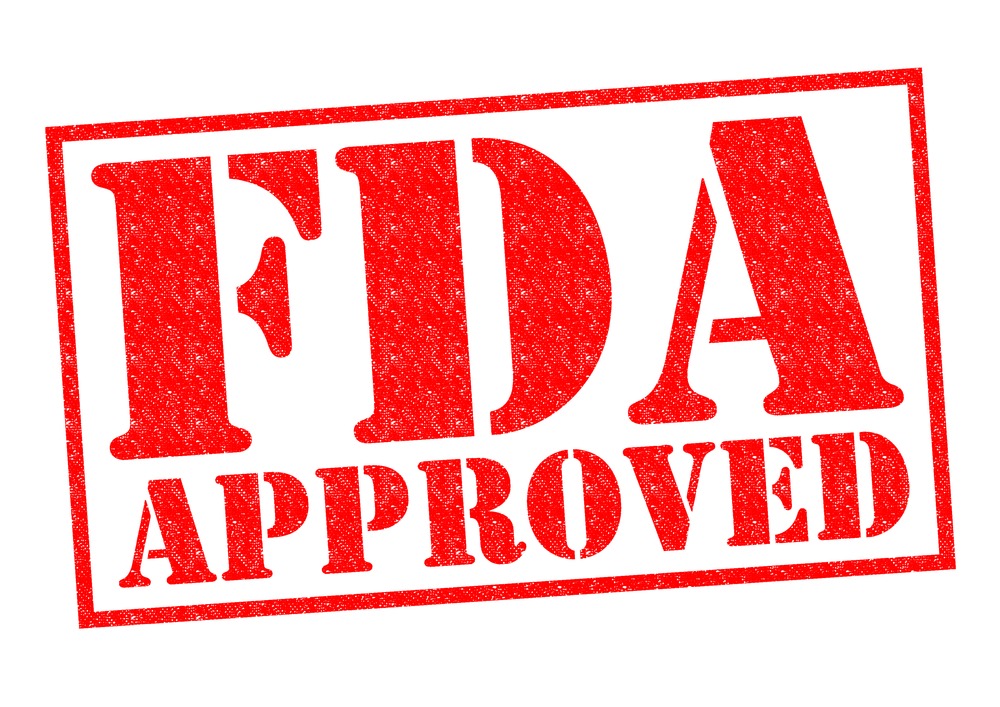There are countless factors that impact innovation and how quickly it progresses. One of the most important, yet arguably least discussed, is regulation. In any technology space, a lack of regulations, overregulation, or ill-fitting regulations can have a major impact on a technology’s or sector’s momentum.
The US Food and Drug Administration (FDA) has come under fire for not providing more guidelines to food technology companies on what is and what is not allowed. Last month, the agency decided that it’s time to start doing something about this regulatory antiquation by announcing the Plant and Animal Biotechnology Innovation Action Plan to outline the key priorities the agency will pursue to support innovation in plant and animal biotechnology while advancing the agency’s public health mission. But does it go far enough?
New Food Labeling Confusion
A quick review of current legal issues in the agtech landscape shows just how problematic it can be when you attempt to apply decades-old regulations to new technologies. The FDA is currently embroiled in two major regulatory disputes with the food technology industry mainly involving how novel foods should be labeled.
Alternative protein company JUST (formerly Hampton Creek) made headline news when it was sued for allegedly failing to comply with FDA regulations regarding the use of the term mayonnaise. The California startup’s vegan sandwich spread product lacked eggs, which is an ingredient that a product must include in order to bear the label mayonnaise according to FDA standards of identity. Instead of eggs, the product contained a pea-protein based ingredient designed to mimic eggs’ part in mayonnaise.
The FDA sent JUST a warning letter detailing different regulatory violations that rendered its product mislabeled, but the startup largely escaped regulatory pressure by finding an incredibly subtle nuance in the regulations. The standard of identity definition for mayonnaise only refers to “mayonnaise,” Hampton Creek pointed out, which means that it does not apply to its product that was labeled simply as “mayo.” Hamstrung by its own rules, the FDA allowed the startup to keep its name but required it to change certain images and statements on its packaging.
In July 2018, the agency indicated that its standards of identity may be subject to upcoming review. Many of the standards were enacted in the 1940s and intended to provide consumers with assurance and conformity in many common food products.
In the protein industry, the FDA and USDA are debating which agency has jurisdiction over meat grown in a laboratory using new cellular agriculture techniques. If the regulators decide that the product can be labeled as meat, it will likely fall under the USDA’s purview and be subject to its rules. If it’s not labeled as meat, however, the FDA will regulate it’s pathway to market.
In August 2018, the regulatory battle over lab-grown meat hit headlines when Missouri became the first state to adopt a law saying that the term meat cannot be used to label anything other than products harvested from livestock or poultry. Called the Missouri Cattlemen’s Fake Meat Bill, the law carried steep fines of up to $1,000 and a year in prison.
The law was designed to protect the state’s $2 billion beef cattle industry. Vegetarian products maker Tofurky, alternative protein advocacy group The Good Food Institute, the Animal Legal Defense Fund, and the ACLU of Missouri is suing to block the new law on First Amendment commercial speech grounds.
Just this week, USDA and FDA announced that they will share regulatory jurisdiction over lab-grown meat products.
Over in the dairy aisle, the FDA has also taken criticism over whether alternatives like almond milk or hemp milk should be allowed to use the term “milk” in their labeling. In 2017, Wisconsin legislators penned the Dairy Pride Act, which would have required the FDA to enforce existing laws that require products bearing the label milk to contain milk derived from cows and to deem any non-cow milk products as mislabeled.
The bill died, but it garnered enough public attention to bring the issue to the top of the FDA’s extensive pile of regulatory issues. In September 2018, the agency announced that it was exploring an alternative approach to naming plant-based dairy substitutes and will issue new labeling guidance for the industry.
How Food Innovation Regulation Works Today
When it comes to innovation in food and agriculture, an inter-agency agreement known as the Coordinated Framework for the Regulation of Biotechnology governs how key federal agencies must evaluate and regulate biotechnology. It provides the USDA, FDA, and EPA with clear mandates regarding how they should approach new biotechnology innovations and which aspects of the technology it must review.
At its core, the Coordinated Framework requires these agencies to make three principal assumptions about biotechnology innovations:
- The process of biotechnology itself poses no unique or special risks.
- A commercial product, regardless of its manner of production, should be regulated based on the product’s composition and intended use.
- The creation of new laws to regulate the products of genetic engineering is unnecessary. Existing laws can address regulatory needs adequately.
The Coordinated Framework has not been revised since it was first put in place in 1986. Former President Obama made some efforts to update the framework’s outdated approach, primarily seeking to improve the time it takes for agencies to respond to approval applications or feedback on new innovations.
Despite the Coordinated Framework’s clear intent to foster regulation and to prevent unnecessary regulatory burdens, the technological advancements and breakthroughs that we’ve seen during the last three decades have dramatically outpaced the Coordinated Framework’s approach.
Although many people assume that a lack of regulation is the optimum state for any industry, sometimes regulations set bright-line playing rules that help an industry progress while creating a more defined space. The principle assumption against creating new regulations for new technologies was intended to prevent unnecessary delays or legal roadblocks to market, but for some startups, the lack of regulation for their novel and unprecedented inventions shrouds their pathway to commercialization in unpredictability and uncertainty. And when investors don’t have a clear picture of how an innovation will receive regulatory approval or even which federal agency will be responsible for regulating the technology, they’re a lot less likely to open up their checkbooks.
A New Regulatory Era at the FDA?
With its new plan, the FDA, which regulates roughly 80% of the food supply including produce, shell eggs, seafood and veterinary products like livestock feed, drugs, and devices, is hoping to ensure the safety of biotechnology products while applying a risk-based approach that gives innovators more clarity and predictability about how their products will be reviewed and regulated.
“There has been some confusion among biotechnology stakeholders about how the FDA regulates products of biotechnology, ensures the safety of these products, and how developers of these products can work with the agency to bring them to market,” FDA spokesperson Juli Putnam wrote to AgFunderNews.
Putnam listed genome editing techniques in particular as an example of a technology that the agency sees as having major potential in food, agriculture, and health.
“To advance this progress, it’s key that the FDA adopt a regulatory approach to genome editing technologies that are as innovative and nimble as the opportunities that we’re tasked with evaluating. Our goal is to ensure that developers know what they need to do to efficiently bring a product to market and that consumers and the public understand how the FDA’s regulatory system helps ensure the safety of such products,” she explains.
Some of the gene editing applications that the FDA intends to help innovators explore include altering specific traits like the environmental stress response of plant foods or fungi, improving health and welfare through disease resistance, creating plants or animals that have human medicinal uses, and reducing the ability of organisms to carry or transmit infectious disease like Zika virus-wielding mosquitos.
As with any new and unexplored technology, however, there’s a need to strike a balance between encouraging innovation and removing unnecessary regulatory barriers while ensuring that environmental and human health are protected.
“The FDA will use robust communications and an engagement strategy designed to continue collaborations with a wide range of stakeholders to understand their views on how the FDA can best support safe innovation in plant and animal biotechnology while addressing and appropriately considering any potential risks. Such outreach is crucial to help ensure that the FDA is fostering innovation while at the same time helping the agency uphold its mission of protecting and promoting public health.”
Increased coordination with stakeholders, including small developers, to improve understanding about the agency’s approaches and how they can ensure that products developed using biotechnology will meet FDA safety requirements is also part of the new approach.
Several new guidance documents will likely be published in the coming months and years clarifying the agency’s policy regarding human and animal foods obtained by technologies like gene editing. It also intends to begin updating the existing procedures for voluntary premarket consultations with industry.
It’s unclear whether the plan will provide any new approaches to labeling novel food products or whether it will resolve any of the existing labeling controversies, however.
Insights Ahead of a Roadmap
The FDA has yet to reveal the entire roadmap for its new plant and animal innovation plan, but it’s provided a few insights into the new approach:
- Establishing a Veterinary Innovation Program that will provide regulatory predictability and efficiency; improve FDA responsiveness; and enable early, sustained interactions with innovators, including small developers.
- Holding a public dialogue with animal developers, industry, and consumer groups where we will review innovations in animal development; discuss current scientific evidence and regulatory science questions that guide FDA’s decision-making process; identify ways to help reduce regulatory burden for developers, and clearly communicate FDA’s flexible, risk-based regulatory approach to stakeholders.
- Issuing guidance for industry that clarifies the FDA’s regulatory approach, characterized by risk-based categories for regulatory oversight; gives clear criteria and risk questions or data requirements where relevant for each category; and provides flexibility to move across categories as we gain familiarity with product risk profiles.
- Issuing guidance to clarify and expand risk-based enforcement discretion for animal models of food species for use in research.
- Providing a list on the FDA website of the specific animals or categories of animals with intentional genomic alterations for which FDA has exercised enforcement discretion with regard to pre-market approval requirements.




